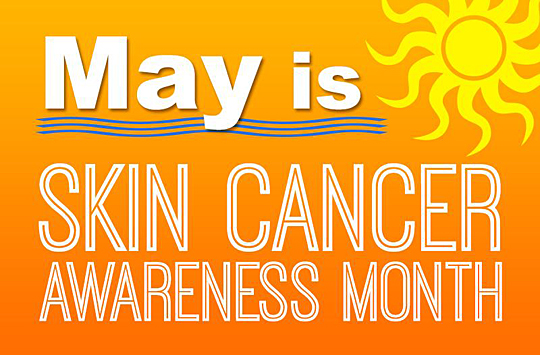While many people remember to protect themselves from sunburn when it’s sunny outside, University of Toledo Health physicians recommend taking daily precautions to prevent developing skin cancer because harmful rays from the sun can penetrate cloud cover and cause skin damage.
One in five people will develop skin cancer, making it the most common cancer in the United States with nearly six million cases treated each year. May is National Skin Cancer Awareness and Prevention Month, and is a good time to review how to protect yourself from the sun.
 Dr. Prabir Chaudhuri, professor and surgical director of the University’s Eleanor N. Cancer Center, recommends avoiding the sun during its peak hours of 10 a.m. and 3 p.m., if possible. If exposure is unavoidable, take these precautions:
Dr. Prabir Chaudhuri, professor and surgical director of the University’s Eleanor N. Cancer Center, recommends avoiding the sun during its peak hours of 10 a.m. and 3 p.m., if possible. If exposure is unavoidable, take these precautions:
• Wear lightweight, long-sleeve shirts, hats and sunglasses;
• Liberally apply a broad-spectrum sunscreen of at least 15 SPF every day and reapply often, especially when sweating or swimming; and
• Do not assume a “base tan” protects you from sunburn or UV damage.
“Using a tanning bed in an effort to avoid sunburn and skin damage is a myth. Tanning beds use intense UVA rays to darken skin, but UVB rays from the sun are what cause sunburns,” Chaudhuri said. “Both are dangerous, and we know that tanning, whether indoors or out, causes cumulative DNA damage to the skin, which can result in skin cancer.”
Melanoma is most common among older adults and senior citizens, but Chaudhuri said people of all ages can develop these malignant tumors.
“People with dysplastic nevi, a family history of skin cancer, extreme sun exposure or who have medical conditions that suppress the immune system need to be particularly vigilant in protecting themselves against melanoma,” Chaudhuri said. “Children are especially at risk because they have their whole lives to accumulate skin damage due to sun exposure.”
Dysplastic nevi are benign moles that can appear on any part of the body. They range in size and can be light pink to very dark brown in color. Dysplastic nevi are usually genetic and start to appear in late childhood and may increase in number with age. As many as one in 14 individuals have at least one of these atypical moles.
One of Chaudhuri’s patients said he monitors his skin carefully for changes because dysplastic nevi run in his family.
“I have a lot of moles, and I’m always looking for changes in their color and shape,” Thomas Fischer said. “I’ve had two melanoma removed. It makes me very anxious because I am likely to get it again, and I know it can progress. It’s important to keep up with it.”
Regular skin self-exams are important in identifying potential skin cancers. All areas of skin should be checked, not just areas that see regular sun exposure. Melanomas have been found on the scalp, groin areas and bottoms of the feet. The appearance of any skin irregularities or changes in existing moles should be examined by a trained physician in an effort to find and treat melanoma in its earliest stages.
“I visit Dr. Chaudhuri every six months now due to my risk of recurrence,” Fischer said. “After spending years at the lake, skiing and getting tan, I realize there’s a tradeoff. All that sun catches up to you eventually.”
Chaudhuri said a checkup takes just a few minutes and problem spots can be identified and removed quickly.
“If caught early, melanoma typically responds well to treatment, but the best treatment for any disease is always prevention,” he said.